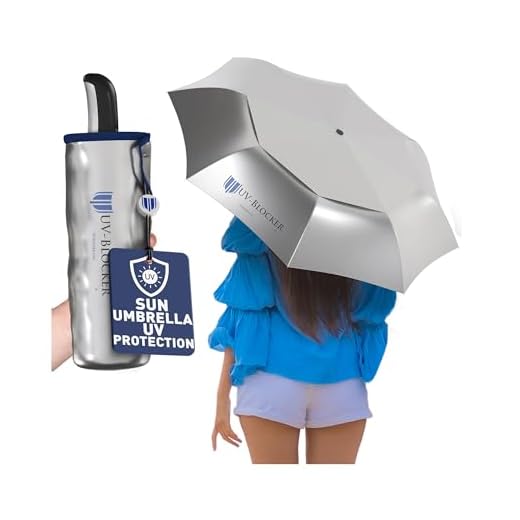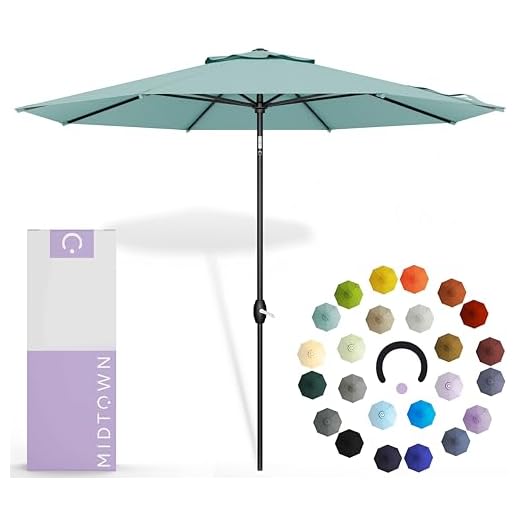

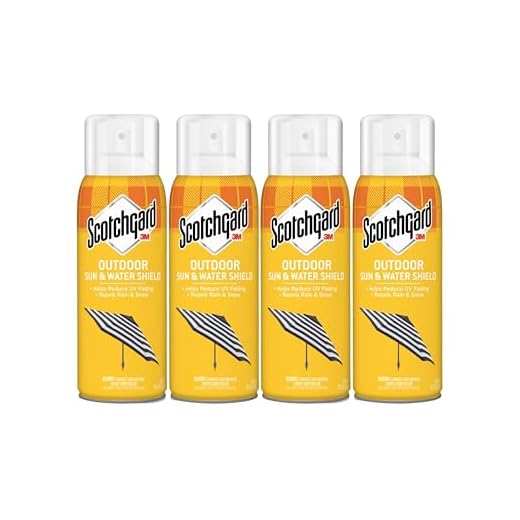
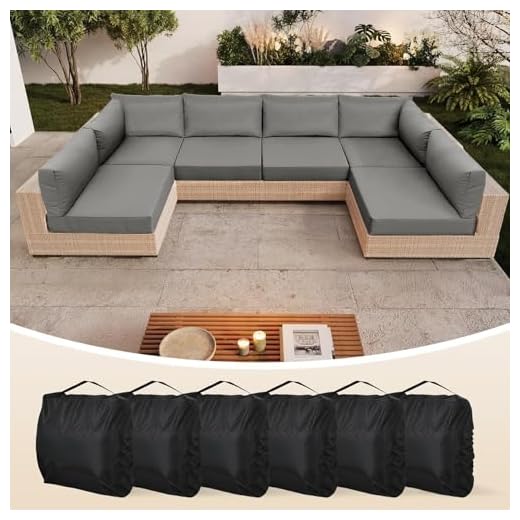
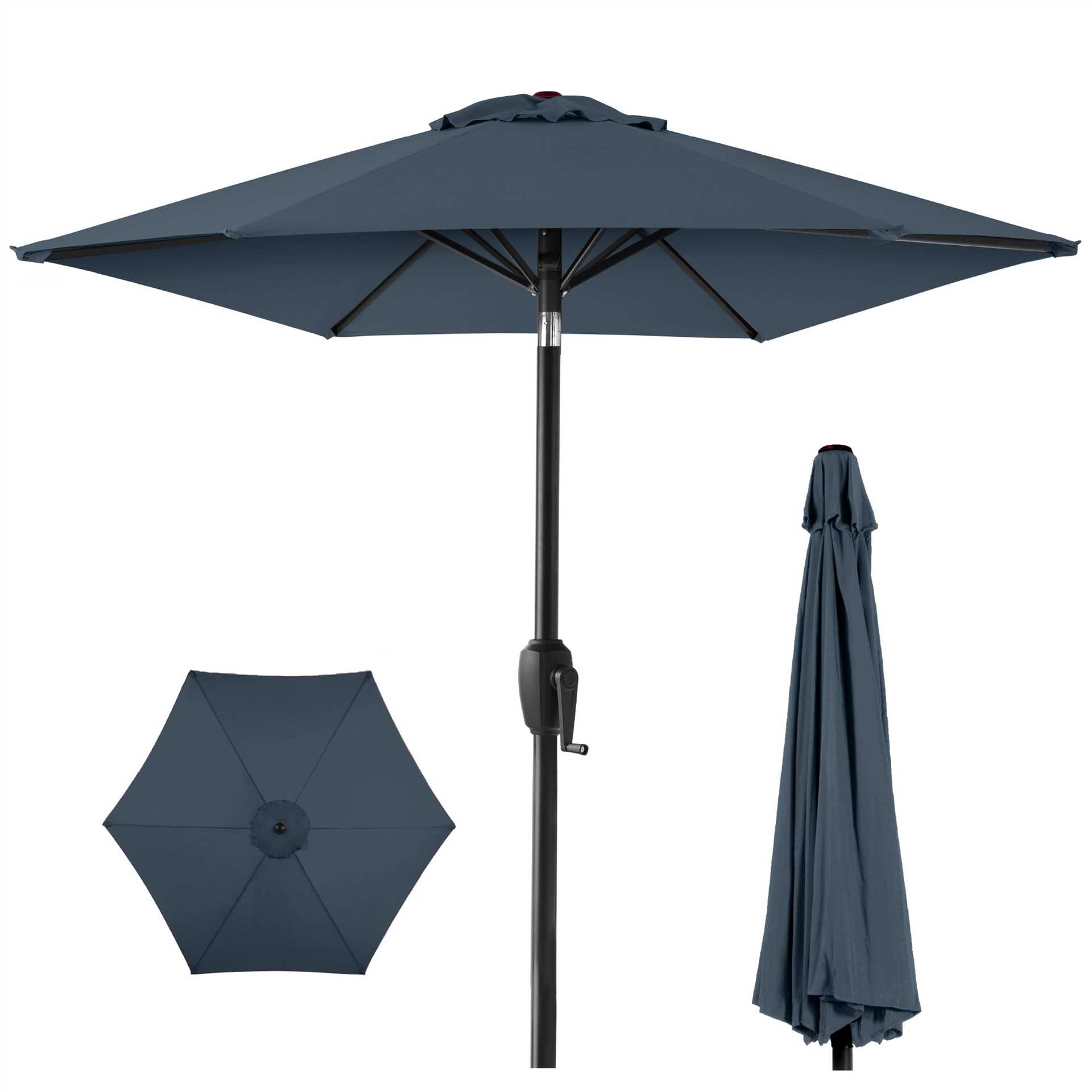
Opt for fabrics that offer durability and UV protection when selecting an outdoor canopy. In this article, I will explore the best materials available, highlighting their benefits and features. This information is designed for homeowners looking to enhance their outdoor spaces, ensuring comfort and style during sunny days.
Throughout the text, I will discuss various types of textiles, such as acrylic, polyester, and olefin, each with unique properties. You’ll learn which materials resist fading, mildew, and water, making them ideal for outdoor use. Additionally, I will provide tips on how to maintain these fabrics to prolong their lifespan and ensure they remain in excellent condition.
By the end of this article, readers will have a clear understanding of which outdoor canopy materials are the most suitable for their needs, enabling them to make informed purchases and create an inviting outdoor environment.
Best Patio Umbrella Quality Fabric
Choosing the right material for outdoor shade structures is critical for durability and comfort. High-performance textiles offer superior resistance to fading, weather conditions, and mildew, ensuring longevity and aesthetic appeal.
Look for fabrics made from solution-dyed acrylic or polyester, as these materials provide excellent UV protection and color retention. Additionally, consider water-resistant options that repel moisture while maintaining breathability.
Key Features to Consider
- UV Protection: A high-level of UV resistance is essential to protect both the fabric and users from harmful sun exposure.
- Water Resistance: Fabrics that repel water prevent mold and mildew buildup, which can degrade the material over time.
- Fade Resistance: Solution-dyed fibers maintain their color longer, reducing the need for replacements.
- Breathability: Opt for materials that allow air circulation to prevent heat buildup beneath the canopy.
When selecting outdoor textiles, it’s also wise to examine the weight of the fabric. Heavier materials typically offer better durability against wind and wear, while lighter fabrics can provide easier handling and storage.
Consider the maintenance requirements of the selected fabric. Some materials are machine washable, while others may require special care to preserve their integrity. Regular cleaning and proper storage during off-seasons will extend the life of the shade structure.
In summary, investing in high-quality outdoor textiles will enhance comfort and prolong the lifespan of your shade solution, making your outdoor space more enjoyable.
Understanding Different Fabric Types for Outdoor Canopies
Choosing the right material for outdoor canopies is essential for durability and performance in various weather conditions. Several fabric types are commonly used, each with unique characteristics that influence their suitability for outdoor use.
One of the most popular materials is acrylic. This fabric is known for its excellent UV resistance, making it ideal for prolonged sun exposure. It also boasts water-repellent properties, keeping the area beneath the canopy dry during light rain. Additionally, acrylic fabrics are available in a variety of colors and patterns, allowing for customization to match outdoor decor.
Types of Fabrics to Consider
Another option is polyester, which is often chosen for its affordability and versatility. While it may not provide the same level of UV protection as acrylic, treated polyester can still offer decent resistance to fading and moisture. This fabric is lightweight and easy to handle, making it a practical choice for those who frequently set up and take down their canopies.
For those seeking a more robust option, solution-dyed fabrics are engineered to resist fading and wear. These fabrics undergo a dyeing process that integrates color within the fibers, ensuring long-lasting vibrancy. They tend to be more expensive but offer enhanced durability and performance.
- Acrylic: UV-resistant, water-repellent, vibrant colors
- Polyester: Affordable, lightweight, treated for moisture resistance
- Solution-dyed fabrics: Long-lasting color, enhanced durability
When selecting a fabric, consider local weather conditions, frequency of use, and desired aesthetic. Investing in high-quality materials can significantly extend the lifespan of outdoor canopies and enhance your outdoor experience.
Evaluating UV Protection Levels in Outdoor Fabrics
Understanding the level of UV protection in outdoor textiles is essential for selecting materials that safeguard against harmful sun exposure. Fabrics are often rated based on their ability to block ultraviolet rays, which can lead to skin damage and fading of colors over time.
When assessing UV protection, look for the Ultraviolet Protection Factor (UPF) rating. This rating indicates how much UV radiation can penetrate the fabric. A UPF rating of 30 to 50 is considered excellent, meaning that only a small percentage of UV rays can pass through. Fabrics with higher UPF values offer superior protection.
Key Factors Influencing UV Protection
- Fabric Type: Different materials have varying inherent UV-blocking capabilities. For instance, tightly woven fabrics typically provide better protection than loosely woven ones.
- Color: Darker colors absorb more UV rays and can offer better protection compared to lighter shades, which may allow more rays to pass through.
- Weight and Thickness: Heavier and thicker fabrics generally provide enhanced UV protection. Lightweight materials may not offer sufficient shielding.
- Finishing Treatments: Some fabrics undergo special treatments to enhance their UV-blocking properties. Always check product descriptions for such features.
To make an informed decision, consider testing the fabric in direct sunlight and observing its performance over time. Regular maintenance, such as cleaning and storing the material properly, can also help maintain its UV protection qualities.
Comparing Durability Among Popular Patio Umbrella Materials
When selecting a shelter for outdoor spaces, fabric durability is a key factor. Different materials offer various levels of resistance to weather conditions, fading, and wear and tear. Understanding the strengths and weaknesses of common materials can help ensure a wise investment.
Two prevalent options are polyester and acrylic. Polyester is lightweight and often more affordable, but it can be prone to fading and degradation from UV rays over time. Acrylic, on the other hand, is known for its superior color retention and resistance to mildew, making it a more durable choice for prolonged outdoor use.
Material Comparison
| Material | Durability | UV Resistance | Mildew Resistance | Color Retention |
|---|---|---|---|---|
| Polyester | Moderate | Low | Moderate | Low |
| Acrylic | High | High | High | High |
| Olefin | High | Moderate | High | Moderate |
Another contender is olefin, which offers excellent resistance to mildew and fading, making it a practical alternative for those seeking durability. While it may not match acrylic in UV resistance, its performance in various weather conditions makes it a popular choice.
Ultimately, the best fabric selection depends on individual needs and local climate conditions. Evaluating the balance between cost, durability, and maintenance requirements will guide the decision.
Water Resistance Features in Quality Umbrella Fabrics
Choosing fabrics with water resistance is essential for outdoor canopies. These materials can withstand moisture and maintain their integrity over time. Look for textiles that feature advanced treatments or coatings designed to repel water effectively.
Commonly, water-resistant options include synthetic fibers like polyester or acrylic, which often undergo specialized processes to enhance their performance. Coatings such as polyurethane or silicone are frequently applied to improve water repellency and create a barrier against the elements.
Key Properties of Water-Resistant Fabrics
Several characteristics contribute to the overall water resistance of outdoor canopies:
- Hydrophobic Treatments: Fabrics treated with hydrophobic agents repel water, causing it to bead up and roll off the surface.
- Seam Sealing: High-quality canopies often feature sealed seams that prevent water from seeping through, ensuring that the interior remains dry.
- Durability: Fabrics that resist wear and tear maintain their water-resistant properties longer, providing consistent performance throughout their lifespan.
Investing in fabrics with these water resistance features will ensure that your outdoor setup withstands rain and moisture, extending its usability and maintaining its appearance.
Color Retention and Fade Resistance in Outdoor Fabrics
Choosing materials for outdoor use necessitates careful attention to their ability to resist fading and retain color over time. Fabrics exposed to sunlight, rain, and varying temperatures can experience color degradation, which significantly impacts their aesthetic appeal and longevity.
Look for textiles that incorporate UV-resistant treatments, which help minimize the harmful effects of sunlight. Such treatments allow the colors to remain vibrant longer, reducing the need for frequent replacements. Additionally, synthetic fibers like acrylic and polyester are known for their durability and fade resistance, making them excellent choices for prolonged outdoor exposure.
Factors Influencing Color Retention
Several elements contribute to how well outdoor materials maintain their color:
- Fiber Composition: Synthetic fibers generally outperform natural fibers in terms of color retention.
- Treatment Processes: Fabrics that undergo specific dyeing methods, such as solution dyeing, typically exhibit enhanced fade resistance.
- Environmental Conditions: Prolonged exposure to harsh weather conditions can accelerate fading, making sheltered options preferable.
Regular maintenance also plays a role. Cleaning fabrics with mild detergents and avoiding harsh chemicals can prolong their lifespan and maintain color integrity.
Understanding Fabric Ratings
When selecting outdoor materials, consider examining ratings provided by manufacturers. These ratings often indicate the fabric’s resistance to fading and can guide your decision-making process:
| Rating | Description |
|---|---|
| UPF 30+ | Good protection against UV rays with moderate fade resistance. |
| UPF 50+ | Excellent UV protection and superior color retention. |
Investing in materials that prioritize color retention and fade resistance not only ensures a visually appealing outdoor space but also minimizes long-term costs associated with replacements.
Maintenance Tips for Prolonging Fabric Life of Outdoor Canopies
Regular cleaning is essential for extending the lifespan of your outdoor coverings. Use a soft brush or broom to remove dust, dirt, and debris from the surface. For deeper cleaning, prepare a solution of mild soap and water, applying it with a sponge or cloth to avoid damaging the material.
After cleaning, rinse thoroughly with water to remove any soap residue. It’s advisable to allow the canopies to dry completely before folding or storing them to prevent mold and mildew growth.
Protection Strategies
Applying a fabric protector can help shield the material from water and stains. Follow the manufacturer’s instructions for application, ensuring even coverage. Reapply periodically, especially after cleaning sessions, to maintain the protective barrier.
During inclement weather, retract the structures to avoid unnecessary wear. If possible, store them indoors during harsh conditions. This practice significantly reduces exposure to UV rays and moisture, both of which can degrade the materials over time.
Seasonal Care
At the end of each season, inspect the coverings for any damage. Look for frayed edges, tears, or discoloration. Addressing these issues promptly can prevent further deterioration and costly repairs.
Consider using a storage bag to protect the canopies during off-seasons. Ensure they are clean and dry before storage to avoid mildew and other forms of degradation.
Additional Tips
- Avoid using harsh chemicals or abrasive materials that can damage the fabric.
- Store in a cool, dry place away from direct sunlight.
- Keep the surrounding area clean to minimize dirt accumulation.
Eco-Friendly Fabric Options for Sustainable Outdoor Canopies
Choosing sustainable materials for your outdoor shade solutions significantly impacts the environment. Eco-friendly fabrics are not only biodegradable but also reduce the carbon footprint associated with traditional materials.
Several options stand out for their sustainability and durability:
- Recycled Polyester: Made from recycled plastic bottles, this fabric is durable and water-resistant, making it an excellent choice for outdoor use.
- Organic Cotton: Grown without harmful pesticides and chemicals, organic cotton is biodegradable and provides a soft, comfortable feel.
- Bamboo Fabric: This renewable resource grows quickly and requires less water. Bamboo fabric is naturally antibacterial and UV-resistant.
- Hemp Fabric: Known for its strength, hemp is a sustainable choice that requires minimal water and no pesticides to grow.
- Recycled Acrylic: This fabric offers excellent UV protection and is made from recycled sources, making it both durable and eco-friendly.
When selecting materials, consider their lifecycle and environmental impact. Opting for fabrics derived from renewable resources or recycled materials can lead to a more sustainable choice for your outdoor settings.
Best patio umbrella quality fabric
Features
| Part Number | 741360281141 |
| Model | 58011 |
| Color | Silver |
| Size | 42" |
Features
| Part Number | 9-LN-BLK-TER-AQUA-N-FBA3 |
| Color | Terylast Fabric - Seawater |
| Size | 9 Foot |
Features
| Part Number | 4336583223 |
| Model | 4336583223 |
| Color | TAN |
| Size | 9 FT |
Features
| Is Adult Product | |
| Size | 10.5 Ounce (Pack of 4) |
Features
| Color | Grey |
| Size | 14-Piece Outdoor Cushion Set |
Features
| Part Number | 840316702430 |
| Color | Butter Cream |
| Size | 12' x 16' |
Video:
FAQ:
What materials are commonly used in high-quality patio umbrellas?
High-quality patio umbrellas are typically made from durable materials such as solution-dyed acrylic, polyester, or olefin fabric. Solution-dyed acrylic is favored for its UV resistance and color retention, making it suitable for outdoor use. Polyester is lightweight and often treated for water resistance, while olefin is known for its strength and resistance to fading. Each material has its own advantages, contributing to the longevity and effectiveness of the umbrella.
How do I determine the UV protection offered by a patio umbrella fabric?
The UV protection of patio umbrella fabric is often indicated by a UPF (Ultraviolet Protection Factor) rating. A higher UPF rating means better protection from harmful UV rays. For example, a fabric with a UPF rating of 30 blocks approximately 97% of UV radiation. To ensure you receive adequate protection, look for umbrellas with a UPF rating of 30 or higher, especially if you plan to spend extended periods outdoors.
Are there specific brands recognized for their quality patio umbrella fabrics?
Yes, several brands are well-regarded for their quality patio umbrella fabrics. Some of these include Sunbrella, Tommy Bahama, and Treasure Garden. Sunbrella is particularly known for its extensive color range and durability, while Tommy Bahama offers stylish designs. Treasure Garden is recognized for its innovative features and high-quality materials. Researching customer reviews and ratings can help you identify the best options for your needs.
What maintenance is required for patio umbrella fabrics to ensure longevity?
To maintain patio umbrella fabrics and ensure their longevity, regular cleaning is essential. Most fabrics can be cleaned with a mild soap and water solution, using a soft brush to remove dirt and stains. It’s advisable to store the umbrella in a dry place when not in use, especially during harsh weather conditions. Additionally, applying a fabric protector can enhance water and UV resistance, further extending the life of the umbrella.
Can I repair a damaged patio umbrella fabric, or should I replace it?
If the damage to a patio umbrella fabric is minor, such as small tears or fraying, it is often possible to repair it with fabric adhesive or patches specifically designed for outdoor fabrics. However, if the fabric is extensively damaged or showing signs of mold, fading, or significant wear, replacement may be the better option. Evaluating the extent of the damage and the cost of repair versus replacement will help in making the best decision.


